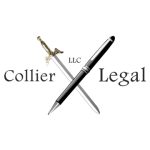Utility vs Design Patents

Navigation
- Definitions and distinctions
- What is the difference between utility and design patents?
- Should I file a utility or design patent?
- What is the disadvantage of a utility patent?
- What are the disadvantages of design patents?
- Are utility patents stronger than design patents?
- Can a design patent claim priority to a utility?
Definitions and distinctions of utility vs design patents
To understand the differences between utility vs design patents, we can start by reviewing chapter 1502.01 of the Manual of Patent Examining Procedure (MPEP), where the USPTO defines utility and design patents as follows:
In general terms, a “utility patent” protects the way an article is used and works (35 U.S.C. 101), while a “design patent” protects the way an article looks (35 U.S.C. 171). The ornamental appearance for an article includes its shape/configuration or surface ornamentation applied to the article, or both. Both design and utility patents may be obtained on an article if invention resides both in its utility and ornamental appearance.
What is the difference between a utility and design patent?
A utility patent protects an invention’s function or means of assembly. A design patent protects an invention’s aesthetic features or appearance.
Clients often confuse utility vs design patents because the standard use of the word “design” includes how something is put together. Part of an invention’s novelty is often how it is assembled. However, these “design” features are actually protected through utility patents, because the way an invention is assembled affects its functionality.
Should I file a utility or design patent?
If you want to protect the way your invention looks aesthetically, you need a design patent. If you want to protect your invention’s functionality, or if the way your invention is assembled adds to its functionality, you need a utility patent. To protect against infringement or copycats, you should file both when possible.
What is the disadvantage of a utility patent?
A utility patent is the most expensive type of patent because it offers the most protection. Utility patents also take the most time to prosecute to issuance.
What are the disadvantages of design patents?
- Limited protection
- Can only include a single claim
- Applications cannot be drafted broadly to protect multiple mediums of expression
Design patents offer limited protection because they only protect an invention’s appearance.
Design patents can only include a single claim, which limits the potential breadth of the claim. You don’t get to include broad claims that are further limited by additional dependent claims.
Design applications must include specific references to the medium of expression. For example, an image can be protected as used on a computer screen or paper, but not both. Thus, multiple design patents may be required to fully protect a single design.
Are utility patents stronger than design patents?
Yes. Utility patents are stronger than design patents because utility patents can be drafted more broadly, can protect multiple features of an invention in a single application, and have a longer term of existence.
However, a design patent can still be a useful asset in a patent portfolio. Design patents can prevent competitors from leeching off of your invention’s appearance, and thus leeching off the goodwill you’ve built with your consumers. Due to the relatively low cost of a design patent, you should consider filing both for an invention to maximize your IP protection.
Can a design patent claim priority to a utility?
Yes, if the prior utility application is a nonprovisional. 35 USC 120 provides that a patent application may claim priority to an earlier-filed application if the applications are co-pending. 37 CFR 1.78 provides that a design patent cannot claim priority to an earlier-filed provisional application.

About
Attorney Collier started his own law firm straight out of law school and has been practicing law in Ohio for 5+ years. During that time, Joe focused on business law and litigation, gaining some exposure to intellectual property law. While running his firm in 2021, Joe decided to go back to school and get his patent license. Since then, Attorney Collier has been focusing on protecting innovators and entrepreneurs through his expertise in intellectual property and business law.
